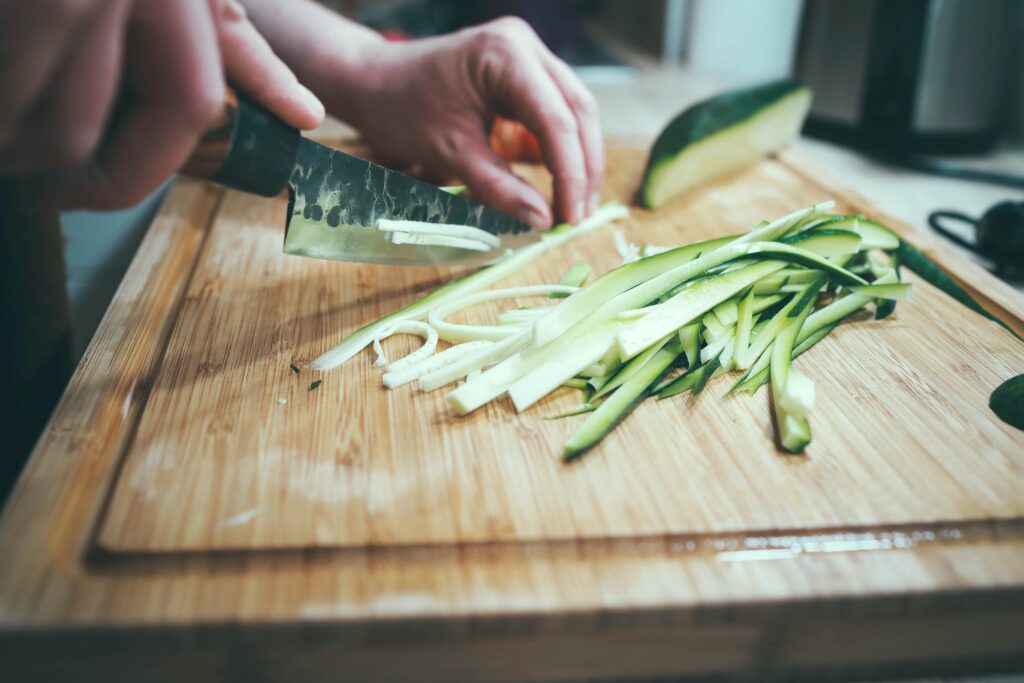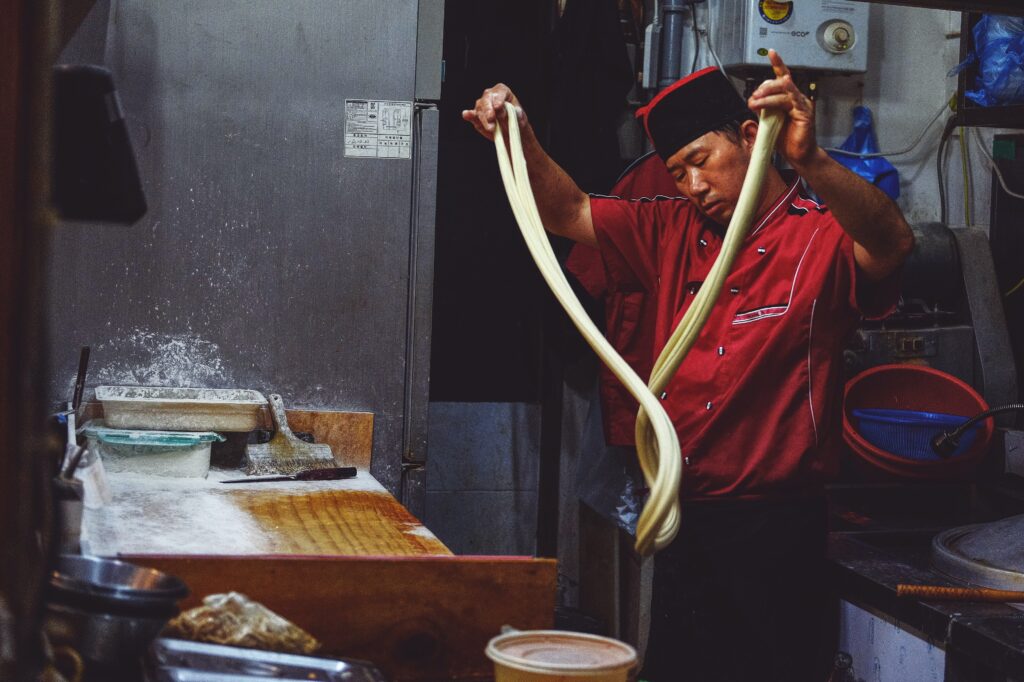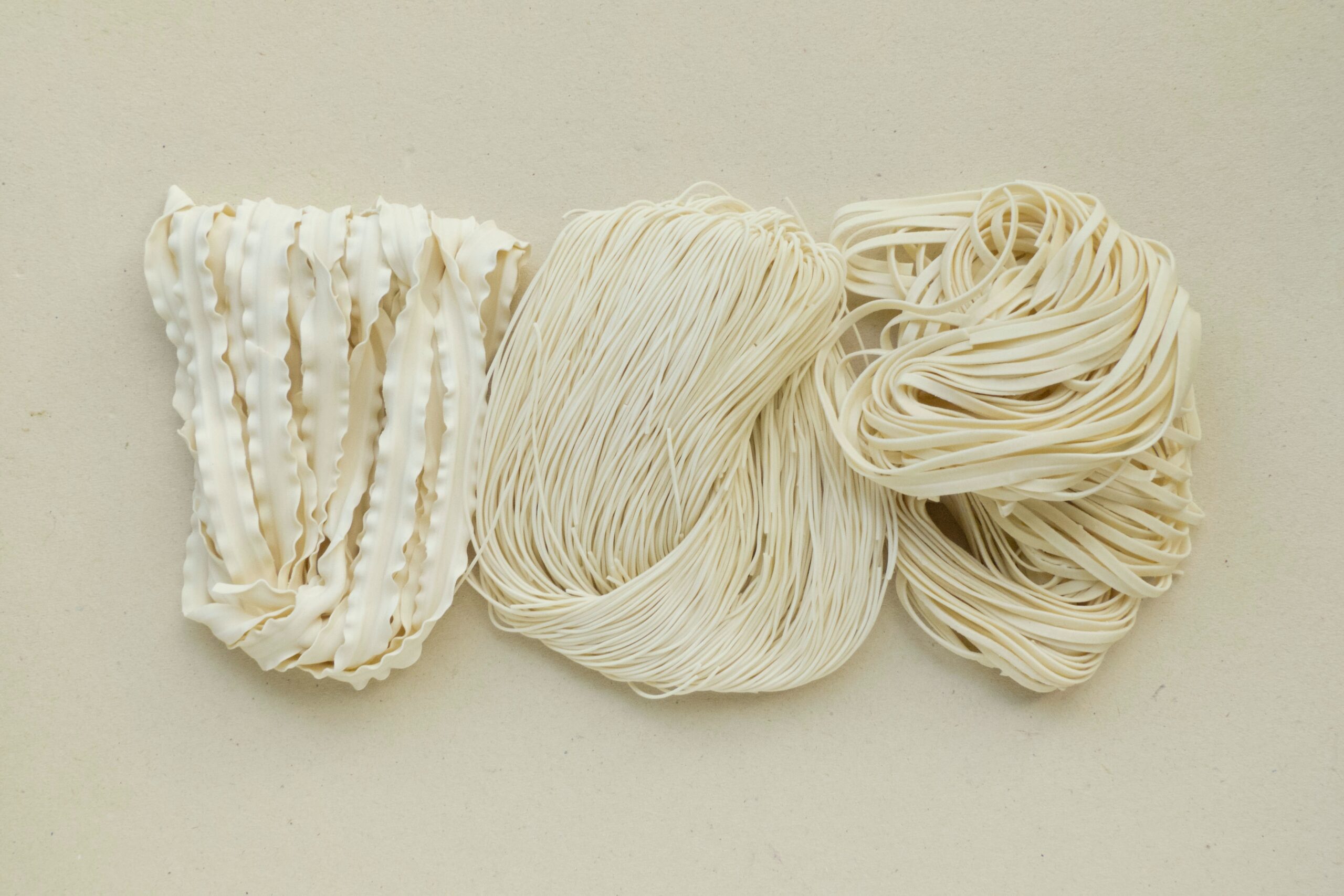For when you have gestational diabetes, want to lose weight, or just want to change things up a bit
Paleo friends, cover your ears.
I admit it. Noodles are delicious. I would eat them in a boat, I would eat them with a goat. You could even say that I love noodles.
Unfortunately, noodles just don’t love me back.
Traditional wheat or rice noodles make me noticeably tired and bloated. They also trigger my desire for junk food and lead to me rationalizing food decisions that are far worse than noodles.
So for me, a happy diet includes noodles of some sort, but a healthy diet has led me to find viable substitutes.
That’s just me though.
People have plenty of reasons for being interested in noodle alternatives:
- They have gestational (or any other sort of) diabetes
- They are trying to cut back on carbs to lose weight
- They have celiac or other difficulties with gluten
- They’re following a paleo or ancestral diet
- They’re supporting a family member with any of the above reasons
- They just want to change it up
Whatever your reason, I hope you find a new favorite from my top 3(ish) noodle substitutions. Here we go!
1. Konjac noodles. Also known as shirataki noodles.

Through the miracle of our ever-shrinking world, these noodles have gone from only being available in Japan, to being a mainstay in many American grocery stores. (And if you can’t find them in your regular grocery store, your local health food store will almost certainly carry them).
Shirataki noodles are made with the starch of the konjac yam and are mainly water and water-soluble fiber called glucomannan. They’re packed in bags with water and usually found in the refrigerated section. Side note: you can also find ones that contain tofu. This adds some color and texture while adding a scant amount of calories. (And even with the tofu, we’re talking 35 calories or less per bag/serving)
These noodles are BORING on their own. And kind of chewy…I like it though. If you like boba, you’ll probably like these. If you are put off by some textures, these may not be for you.
It’s Ok that they’re boring because, when prepared right, they’re a great vehicle for your favorite sauce. It’s incredibly important to prepare them right through, otherwise, they smell weird and release water into your sauce. Here’s how to do them justice:
- Open the bag and drain the water
- Add to boiling water for a few minutes (maybe 3?)
- Drain
- Add drained, wet noodles back to the hot pot, turn the heat on medium, and stir frequently. The noodles are ready when you don’t see any more water, and the noodles make a sizzling sound when you move them. At this point, they will have none of the fishy smell you noticed when opening the bag.
Now they’re ready to use! Just toss them in your favorite sauce, and eat.
I find that these noodles work best with heavier or more substantial sauces (especially compared to the next noodles in the lineup). For a quick meal, here are some suggested uses:
- Spaghetti with meat sauce
- Alfredo with salmon or other protein of choice + a couple of handfuls of arugula
- Creamy chorizo sauce with bell peppers (let me know if you want any of these recipes)
2. Kelp noodles

These might be my actual favorites right now, but I bumped them to #2 because they’re a lot more delicate and just not quite as versatile as the shirataki.
But man oh man, if you like glass noodles/cellophane noodles (or just good food in general), you have to add these to your repertoire. Kelp noodles are out of this world as a substitute for glass noodles, except they’re lower in carbs and overall calories. (Also, if you don’t know what glass noodles are, get thee to a good Sichuan or Korean restaurant, stat. You will thank me later).
Like konjac noodles, these noodles don’t include a lot of actual food. At 18 calories per bag and 6 calories per serving, they add texture and bulk to your meal, but you’ll have to make sure to add some other ingredients to get actual nutrients. Though they are a very rich source of iodine.1
When you add them to the right recipe, I challenge you to notice that they’re not your standard glass noodle. The key is preparing them right. While kelp noodles don’t require cooking, if you add them to food right out of the bag, they’ll be crunchy and weird. (Though crunchy and weird can be a nice addition to salads).
To do them justice, do the following:
- Rinse them
- Add to a large bowl: the juice of 1 lemon (or about 3TBSP jarred lemon juice), 1 TBSP baking soda, enough hot water to cover the noodles, then the noodles. Note: don’t use boiling water. Hot tap water is hot enough.
- Let the noodles sit in this mixture for about 10 minutes
- Thoroughly rinse the noodles. They’re ready to add to your favorite sauce now!
Check out I Heart Umami’s page for kelp noodle recipes and inspiration, or try this ridiculously easy, tasty recipe with Korean Gochujang sauce and powdered peanut butter. Note: he uses shirataki noodles but this recipe works well with both noodle types.
Or just keep it simple. I like to:
- chop some fresh garlic (ok, actually a ton of fresh garlic. But you do whatever you like)
- saute garlic in some butter
- add some soy sauce or coconut aminos, a couple of shakes of chili flakes, and a splash of toasted sesame oil to the pan
- Once you have your sauce ready, stir in the softened kelp noodles
- Heat gently until just warmed through, then enjoy!
3. Zucchini noodles (zoodles)

I have to be honest. I haven’t quite perfected zucchini noodles yet, but they’re still a contender. While they’re the least “noodly” on this list, they are also the only ones that are completely unprocessed (I don’t consider cutting zucchini into noodle shapes “processing”). While I would argue that both kelp and shirataki are minimally processed and are absolutely fine additions to most people’s diets, if you’re completely avoiding processed food, zucchini noodles are for you.
Check out this article in Downshiftology for all you could ever want to know about preparing zucchini noodles, and more. Plus recipes. But here are some quick takeaways:
- Lots of people like to use a spiralizer to make these and other “noodles” from vegetables. I use a jullienne peeler. It’s still fast, but it takes up basically zero room in my kitchen.
- Don’t overcook your zoodles! (I think this has been my problem). Downshiftology recommends either eating them raw or cooking them for a max of 2 minutes to just barely heat them. If you use a microwave, they could be done in as little as 30 seconds.
Zucchini noodles are fairly versatile, though I’ve found they work best with heavier or stickier sauces since they don’t really absorb anything. Think:
- Spaghetti with meat sauce (yes I know I suggested the same for shirataki. We keep it simple here, right?)
- Garlic, olive oil, parmesan cheese, the meat of your choice, and a squeeze of lemon at the end
Bonus noodle thoughts
If you’re a fan of zucchini noodles, you should try cucumber noodles.
Once you “noodle-ize” them, you have an added step of salting them so the excess water comes out (otherwise you’ll have a really soupy dish). Once you salt them and rinse the salt, you have the basis for a really delicious, refreshing meal.
Try these with tahini, rice vinegar, garlic, chili flakes, and soy sauce/coconut amino acids. Oh, and garlic, of course. Trust me.
Know when to just chill and eat some regular pasta.
If you don’t need to avoid conventional noodles for medical reasons, there will be times when it’s worth it to eat the real thing. Like when you’re at the dumpling joint, watching the chef make hand-drawn noodles. (Note: if you live next to the dumpling joint and watch the chef make hand-drawn noodles every day, that’s not what I mean). Or when you’re in Italy for that wedding.
Enjoy the noodles when they’re special, and move on.

Mangiare!
1Friends with thyroid issues, other issues that are impacted by iodine, or if you’re already on an iodine supplementation regime, talk to your doctor first. For the rest of us, kelp noodles are considered a safe (and delicious, I might add) way to get the iodine our diets typically lack.







Leave a Reply